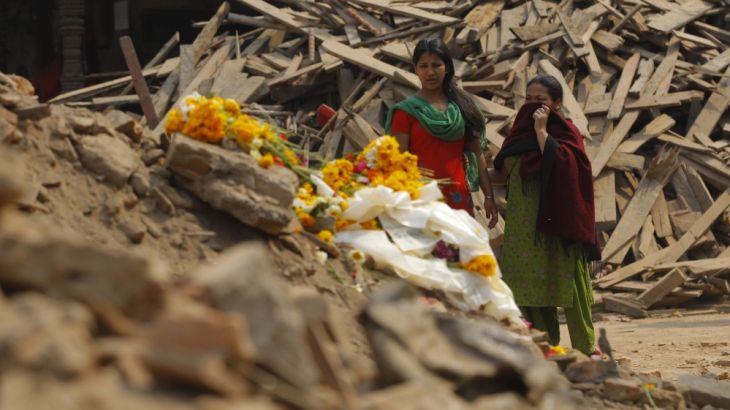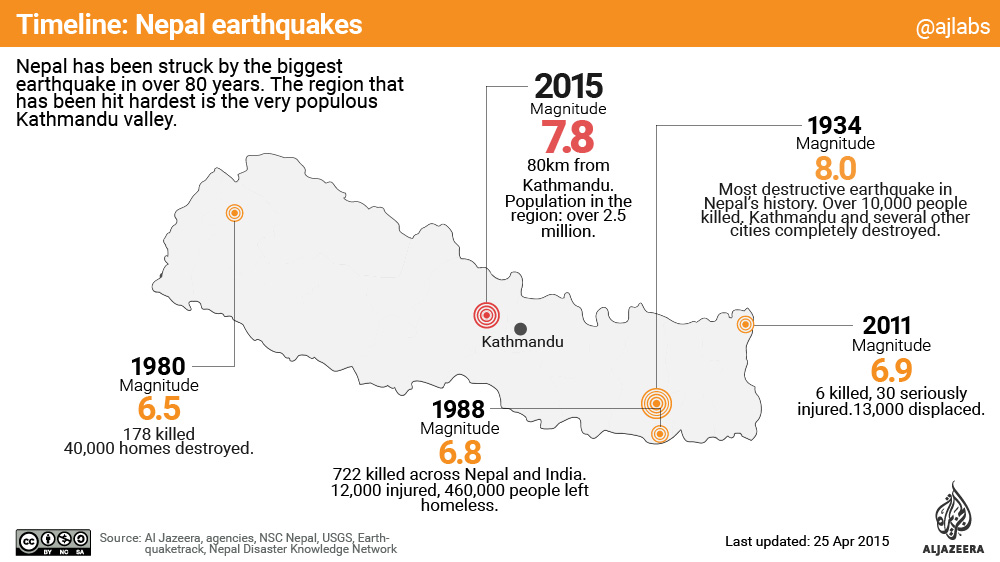Pregnant women vulnerable after Nepal quake
Lack of adequate health facilities and loss of breadwinners putting health of pregnant women at risk, officials say.

Health experts in Nepal are concerned about the more than 126,000 pregnant women that the UN estimates were affected by last month’s devastating earthquake.
Pregnant women were among the most vulnerable groups at the time of the quake given that they could not run, said Dr Nuzhat Rafique of United Nations Children’s Fund (UNICEF).
Keep reading
list of 4 itemsCould a bird flu pandemic spread to humans?
Family says al-Shifa doctor was tortured to death in Israeli prison
Measles outbreak kills at least 42 people in northeast Nigeria
In post-earthquake Nepal, pregnant women are at a higher risk of giving birth prematurely, suffering miscarriage or experiencing pregnancy complications.
Laxmi Lamichane, 30 weeks pregnant, was visiting a hospital in the town of Pokhara, about 200km from Kathmandu, for check-ups on April 25 when the 7.8 magnitude earthquake struck.
Currently under treatment at the capital’s Om Hospital & Research Centre, Lamichane told Al Jazeera: “First, I was told to not to move.
“But then the hospital kept shaking and an oxygen cylinder fell over. The doctors came and told me to get out so I ran down the stairs.”
Twelve hours later, Lamichane had to get an emergency caesarian operation. Her baby was born almost eight weeks premature and currently lies in an intensive care unit.
Premature deliveries
After the catastrophic earthquake, doctors at Om Hospital & Research Centre say several women at the hospital had miscarriages.
The immense stress from situations such as the quake might contribute to premature births, says Dr Poonam Khetrapal Singh, the World Health Organisation’s regional director for Southeast Asia.

“Women who are about to deliver are particularly vulnerable,” she said.
“They may lose their homes, they may lose a breadwinner. And that does cause stress, so there could be premature deliveries.”
The earthquake’s impact on women and maternal health are “major concerns”, she said.
“There are no health facilities functioning the way they normally do, so women really get affected when there is no health post to go to,” Singh told Al Jazeera.
“And that is why we are advising the government that they should set up a female, community volunteer health programme so that the volunteers could go out and meet women and help them.”
Many people in the Himalayan nation now live in temporary shelters and under tarpaulins, while the majority of women live in rural and remote areas, where proper medical help was difficult to access even before the quake.
“[The focus now must include] concentrating on making facilities available in the districts and even at the periphery, near the birthing centres where women can come and have the service and making mid-wives available in those tents 24/7,” said UNICEF’s Dr Rafique.
“The next step would be to mobilise outreach teams from those shelter homes and tents, and tent facilities to peripheral areas.
“And involving communities and volunteers to reach those women who need these services.”